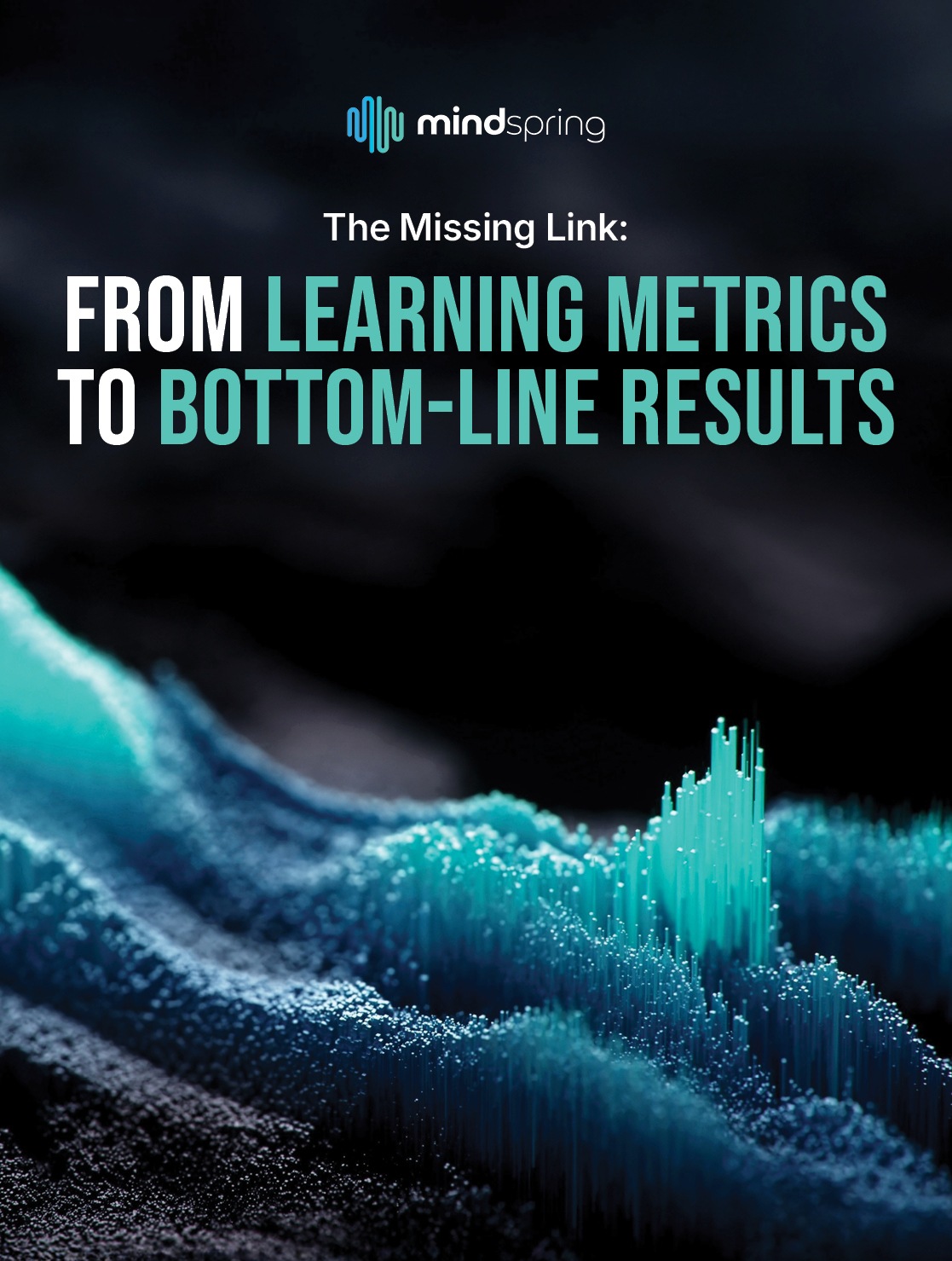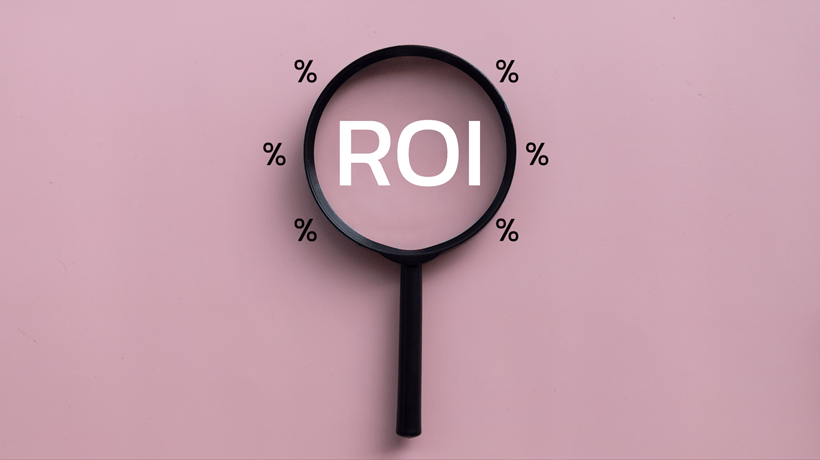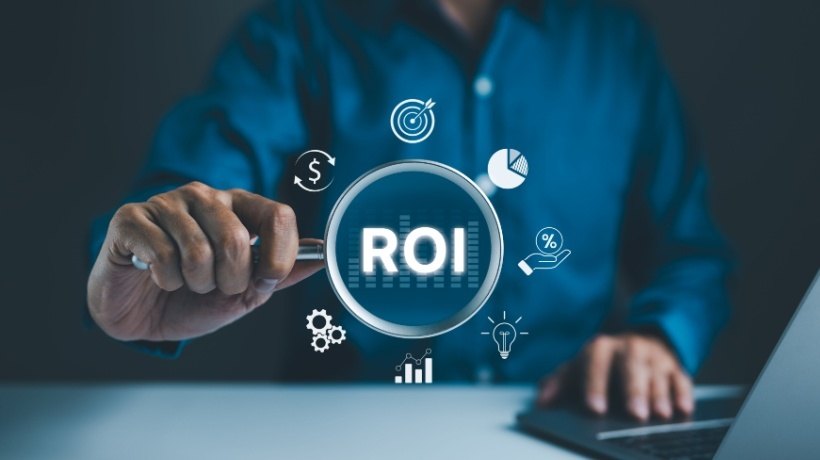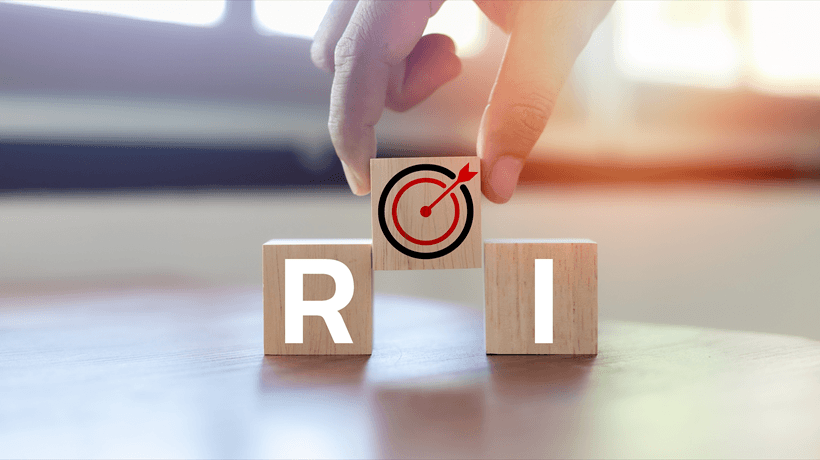Designing A Framework That Grows With You
Building an effective ROI measurement system requires strategic thinking, stakeholder alignment, and a framework that can grow from basic metrics to sophisticated business impact analysis.
Your ROI measurement system should be like a well-designed building: solid foundation, room for expansion, and infrastructure that supports increasing complexity. Most organizations make the mistake of trying to measure everything at once, leading to overwhelming data collection efforts that provide little actionable insight.
Start with what matters most to your organization today, then build measurement capabilities systematically. If you're primarily focused on compliance training, begin by establishing clear learning metrics (completion rates, assessment scores) and one key business metric (incident reduction, audit results). As your measurement maturity grows, add predictive indicators and more sophisticated attribution methods.
The framework should include three levels of measurement readiness:
- Foundation Level focuses on reliable data collection for basic learning metrics and one primary business outcome. This establishes credibility and demonstrates your commitment to measurement.
- Growth Level expands to multiple business metrics, introduces baseline comparisons, and begins tracking leading indicators that predict business impact.
- Advanced Level incorporates predictive analytics, automated data collection, and sophisticated attribution methods that isolate training impact from other business variables.

Selecting Your Metric Portfolio
The key to sustainable ROI measurement is choosing the right combination of metrics that align with the Enhanced Kirkpatrick Model—enough to tell a complete story from internal processes through business impact, but not so many that data collection becomes overwhelming.
Your metric portfolio should align with MindSpring's five-level framework:
Level 0 - Internal Team Satisfaction and Process Evaluation measures the health of your learning programs and team effectiveness: enrollment rates, completion rates, time-to-completion, resource utilization, and internal team satisfaction with program development and delivery. These metrics help you optimize program delivery and identify potential issues before they affect participant outcomes.
Level 1 - Reaction captures participant satisfaction and engagement: course ratings, Net Promoter Scores, engagement metrics, and feedback quality. These indicate whether participants find the learning experience valuable and engaging.
Level 2 - Learning measures knowledge acquisition and skill development: assessment scores, competency improvements, certification achievements, and knowledge retention rates. These connect directly to your learning objectives and demonstrate program effectiveness.
Level 3 - Behavior tracks application and behavior change: on-the-job application rates, behavior observation scores, skill demonstration in real work situations, and sustained behavior change over time. These metrics bridge the gap between learning and business impact.
Level 4 - Results captures the organizational impact: performance improvements, error reduction, productivity gains, employee retention, customer satisfaction, or revenue growth. These metrics must align with your organization's strategic priorities and be measurable within a reasonable timeframe after training completion.
For a customer service training program following this model, your portfolio might include internal delivery metrics and team satisfaction (Level 0), participant engagement scores (Level 1), assessment results and product knowledge scores (Level 2), observed customer interaction improvements and application of new techniques (Level 3), and customer satisfaction scores with call resolution rates (Level 4). This combination tells the complete story from program development through business impact while maintaining clear connections between each measurement level.
Creating Stakeholder Buy-In
Comprehensive measurement requires resources, time, and cooperation from multiple departments. Without stakeholder buy-in, your measurement system will lack the data access and organizational support needed for success.
Begin by identifying who needs to be involved: HR for employee data, operations for performance metrics, finance for cost information, and IT for system integration. Each stakeholder group has different priorities and concerns about measurement.
Address their specific interests: Show HR how measurement demonstrates L&D's strategic value. Explain to operations how measurement helps optimize workforce performance. Demonstrate to finance how ROI data supports budget decisions and resource allocation. Assure IT that measurement requirements can be integrated with existing systems and security protocols.
Create a measurement charter that documents everyone's role, data sharing agreements, and the business case for comprehensive measurement. This charter becomes your reference point when stakeholders question resource allocation or data sharing requirements.
Most importantly, show early wins. When your initial measurements demonstrate clear business impact, stakeholders become advocates for expanding measurement capabilities. Success breeds support for more sophisticated measurement approaches.
ROI Measurement System: Sustainable Data Collection Strategies
The biggest threat to ROI measurement systems is data collection fatigue. Organizations often begin with ambitious measurement plans that become unsustainable when they realize the time and effort required for manual data gathering.
Design your data collection strategy around automation wherever possible. Most learning management systems can automatically capture process and learning metrics. Business systems often contain the performance data you need for impact measurement—the challenge is accessing and connecting this information.
For data that requires manual collection, create efficient processes that minimize burden on participants and stakeholders. Use brief pulse surveys instead of lengthy evaluations. Implement sampling strategies that provide reliable insights without measuring every participant. Establish regular data collection cycles that align with business reporting schedules.
Consider the total cost of data collection, including time from participants, administrators, and analysts. If collecting a particular metric requires more resources than the insight it provides, eliminate it from your measurement system. Better to measure a few things well than many things poorly.
Technology Infrastructure For ROI Measurement
Your technology stack doesn't need to be sophisticated, but it does need to be integrated. The most common measurement failure occurs when data lives in disconnected systems, making it impossible to trace learning activities to business outcomes.
At minimum, you need the ability to connect learner identities across systems: your learning management system, performance management system, and business databases. This connection enables tracking individual participants from enrollment through business impact.
Many organizations already have the necessary technology infrastructure but lack the integration to support ROI measurement. Work with your IT team to establish data connections between systems. Even simple monthly data exports that can be merged in spreadsheets provide sufficient capability for effective ROI measurement.
For organizations ready to invest in dedicated analytics tools, look for platforms that can integrate multiple data sources, provide visualization capabilities, and support predictive analytics. However, remember that sophisticated tools require analytical expertise to use effectively.
Building Analytical Capabilities
ROI measurement requires analytical skills that many L&D teams don't currently possess. Rather than hiring data scientists, focus on building practical analytical capabilities within your existing team.
Start with basic statistical concepts: understanding correlation versus causation, confidence intervals, and statistical significance. These concepts help you interpret measurement results accurately and communicate findings credibly.
Develop skills in data visualization and storytelling. The most sophisticated analysis is worthless if you can't communicate findings effectively to stakeholders. Learn to create charts and reports that highlight key insights and support decision-making.
Consider partnering with other departments that have analytical expertise. Finance teams understand ROI calculations and cost-benefit analysis. Operations teams know how to track performance metrics and identify improvement opportunities. Marketing teams have experience with attribution and campaign measurement.
Making Measurement Actionable
The ultimate test of your ROI measurement system is whether it influences decisions and improves outcomes. Measurement for measurement's sake provides little value—you need systems that drive action.
Build feedback loops that connect measurement results to program improvements. When measurement identifies effective training approaches, scale them across your organization. When measurement reveals ineffective programs, modify or eliminate them.
Create regular reporting cycles that align with business planning processes. Quarterly business reviews should include L&D impact data. Annual strategic planning should incorporate ROI insights for resource allocation decisions.
Most importantly, use measurement to continuously improve your programs. The goal isn't to prove that training works—it's to make training work better. Your measurement system should identify opportunities for improvement and track progress over time.
Building an ROI measurement system is an iterative process that improves with experience. Start with a solid foundation, focus on sustainable practices, and gradually expand your capabilities as your measurement maturity grows. The organizations that succeed in ROI measurement are those that treat it as an ongoing capability rather than a one-time project.
How Do You Communicate ROI To Stakeholders
You've built a robust measurement system and collected compelling data, but here's where most L&D teams stumble: turning spreadsheets into boardroom wins. The CFO wants financial returns, the CEO cares about strategy, and operations focuses on performance—all looking at the same data but speaking different languages. Our eBook, The Missing Link: From Learning Metrics To Bottom-Line Results, reveals how to tailor your ROI story for each audience, create visuals that make complex data instantly clear, handle tough methodology questions with confidence, and transform measurement results into strategic leverage that secures budget increases rather than just proving past success.









